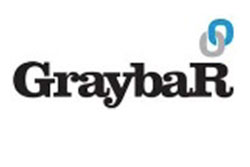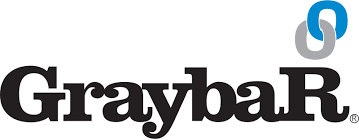Graybar and WESCO Report 2020 Q3 Results

As expected, WESCO and Graybar reported bounce back Q3 quarters as the industry rebounded from a dismal COVID-driven Q2.
The two companies, however, portray different stories based upon their customer mix, hence sharing some insights into the construction market (Graybar) and into the industrial and utility markets (WESCO).

Graybar
According to their press release
- For Q3 2020 Graybar reported net ales of $1.88 billion, a 5.2% decrease vs Q3 2019 with net income reported at only $34.5 million, down 29.3%. The net income was impacted by a non-cash pension settlement, otherwise net income would have been $52.2 million
- For the first 9 months of 2020, sales are down only 5.1%.
In reviewing their 10-Q for additional insights,
- SG&A was reduced by 7.7%. This was reduced due to reduced sales compensation as well as lower travel & entertainment expenses.
- Gross margin was 18.9%, down from 19.1% during the same quarter in 2019. (Product mix? Customer mix? Competitive environment?)
- Inventory dropped about $83 million, which given a sales decline of $103.5 million, appears to highlight some planned inventory reduction.
- Service revenue, defined as “professional services, general contracting services and storage services” represents less than 1% of net sales for the nine months ended September 30th” (so, as much as the industry “talks” about generating fees from services (not bundling with material), one of the largest in the industry isn’t too successful in this endeavor.)
- Customer Mix for Q3
- Construction is 58.5%, down from 59.1%
- CIG (commercial and government) was 26.9% vs 26.4% (not surprising given the pandemic and federal and municipal government needs)
- Industrial & Utility is 14.6% vs 14.5%
This business mix is significantly different than WESCO’s, hence one of the reasons for a difference in performance.
- Performance by customer segment for the quarter:
- Construction declined 6.2%
- CIG declined 3.3%
- Industrial and Utility declined 4.8%
- Their trade receivables “improved modestly” over the past nine months vs 2019. (Planned?)
- “Days in inventory” also increased modestly (planned or a result of slower sales?)
So, construction-oriented and, as many readers know, the construction market had a come-back in Q3.

WESCO
From an equity analyst viewpoint, WESCO has been a bellweather, or a proxy, for the electrical industry as they believed the company was a “pure play” for the industry. Those in the electrical industry knew otherwise and that the company had multiple business segments as well as was more focused in the industrial segment and large contractors.
It’s recent acquisition of Anixter makes its reporting more “muddied” due to the size and complexity of the company. Consider, it now has business in 30 countries! Tough to be representative od the US electrical market and difficult to use the US electrical market as the benchmark for “outperforming” the market.
Not that their new model is bad, just different.
WESCO released their Q3 earnings last week and their first one that includes a full quarter of WESCO. Their presentation can be found here and a transcript of the earnings call is available here.
Their results:
- The company now has 3 business units, which each do $4-7 billion annually.
- Electrical and Electronic Systems (EES) is 42% of the business
- WESCO’s electrical business plus Anixter’s wire and cable business
- (In reviewing WESCO’s 8K that shared historical WESCO and Anixter sales that comprise EES, the historical WESCO business was 66-67% of combined EES sales.)
- Communications and Security Solutions (CSS) is 33% of the business
- Anixter’s communications and security business plus WESCO’s Datacom, AV and safety businesses
- Utility and Broadband Solutions (UBS) is 25% of the business
- Both companies’ utility business (and these two were in the top 4 utility distributors in the country.)
- Electrical and Electronic Systems (EES) is 42% of the business
- WESCO feels that the acquisition of Anixter, coinciding with secular trends of increased connectivity and automation (and possibly utility grid modernization / an infrastructure bill) will evolve the company to a “growth” company. (remember, the audience for a quarterly call is equity analysts)
- Sales were down 5% overall vs 2019 but up 8% from Q2
- EES
- Down 10% for the quarter but up 13% from Q2 (and this includes some material cost benefits from copper)
- Backlog grew due to delays
- Seeing an increase in OEM business
- EES is a $7.2 billion division with an EBITDA of $458 million (2019)
- 67% is US, 22% Canada, 11% rest of world
- CSS
- Sales down only 2% for the quarter and up 10% sequentially
- Security sales were up low single digits
- CSS is $5.6 Billion with 70% in the US, 22% rest of world
- UBS
- Sales were flat and down 2% from Q2
- Weakness reported in the industrially-focused integrated supply / global accounts business
- Utility sales were flat
- UBS is $4.4 billion in sales with 87% in the US
- EES
- Gross margin was up 20 basis points to 19.6% as WESCO adopts “best practices” from Anixter.
- Adjusted EBITDA for the combined business is 6.1% of sales, up from 5.5% in Q2 as well as Q3 2019.
Answers to analyst questions
- Company is focused on seeking “cross sell” opportunities within and across divisions.
- Bringing lighting capabilities and WESCO’s turnkey retrofit renovation business (remember, they purchased Sylvania Lighting Solutions) to Anixter’s customer base.
- Offering AV and safety to other customers (the cross pollination of complementary businesses may stimulate other distributors to expand into, or acquire, other segments as revenue generation opportunities to gain greater share of wallet from customers.)
- Anixter’s electrical business had a higher margin than WESCO’s electrical business and WESCO is seeking to understand better to improve given that Anixter’s electrical business was about 50% of WESCO’s and more wire / cable (and really fiber) focused and the Anixter wire business succeeded based upon “value-added / services”. WESCO sees an opportunity to improve margins.
- For EES
- Had growth in distribution equipment (primary beneficiary is Eaton although WESCO does have some distribution equipment sales from Schneider, ABB and Siemens)
- Growth in wire / cable
- Growth in motors and controls
- Some growth in lighting and solar
- Construction a much smaller percentage of the company than every before (last quarterly call it was mentioned it was only 24% of the company, which would be about $4-4.5 billion globally, hence US construction sales is probably $2.5-3 billion.)
- Investing in corporate-wide digitalization initiatives to enhance capabilities, productivity and facilitate enhanced usage of analytics to drive sales and profitability.
WESCO is a different view of where electrical material is being sold and perhaps a proxy for major segments if viewed by division, however, it isn’t a proxy, from purely a numbers viewpoint, of the construction market.
WESCO’s results are more similar to Rexel and much different than Grainger whereas Graybar, similar in model to Rexel, is significantly different.
For Q3, Graybar was down 5% and primarily represents the construction market. WESCO’s EES division was down 10% and leans more to the industrial market. Two different sides of the electrical business. As companies, both performed well financially. As it relates to their market segments, that depends upon the desired focus.























